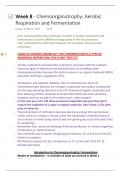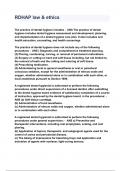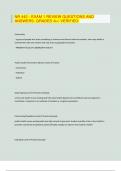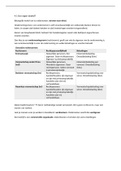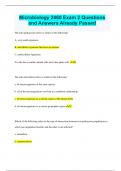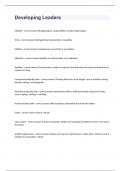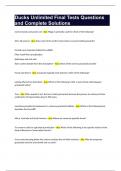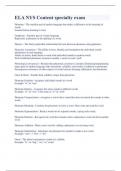Class notes
Lecture notes Microbial Physiology And Growth (BIO231) Week 10
- Course
- Institution
Complete lecture notes of BIO231 Microbial Physiology and Growth week 10 on Chemoorganotrophy Aerobic Respiration and Fermentation. Includes all the lectures slides content along with word-for-word commentary from lecturer and in red is my personal commentary that explains some concepts in easier t...
[Show more]
